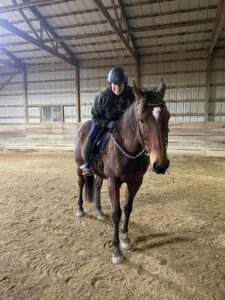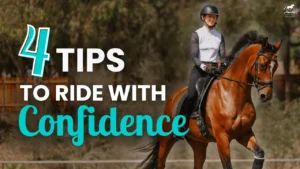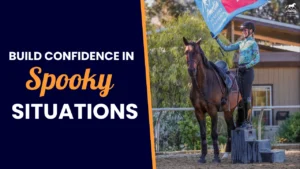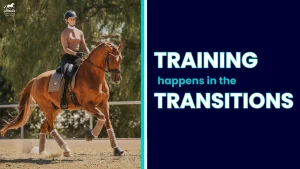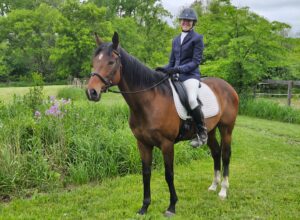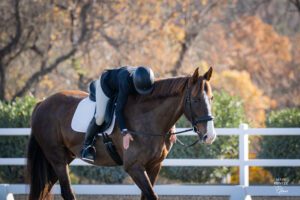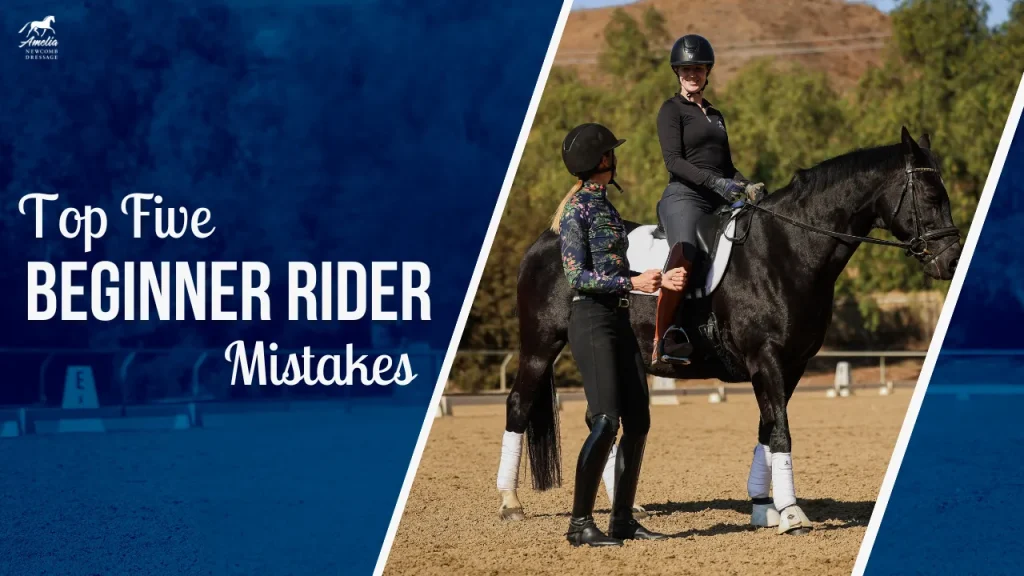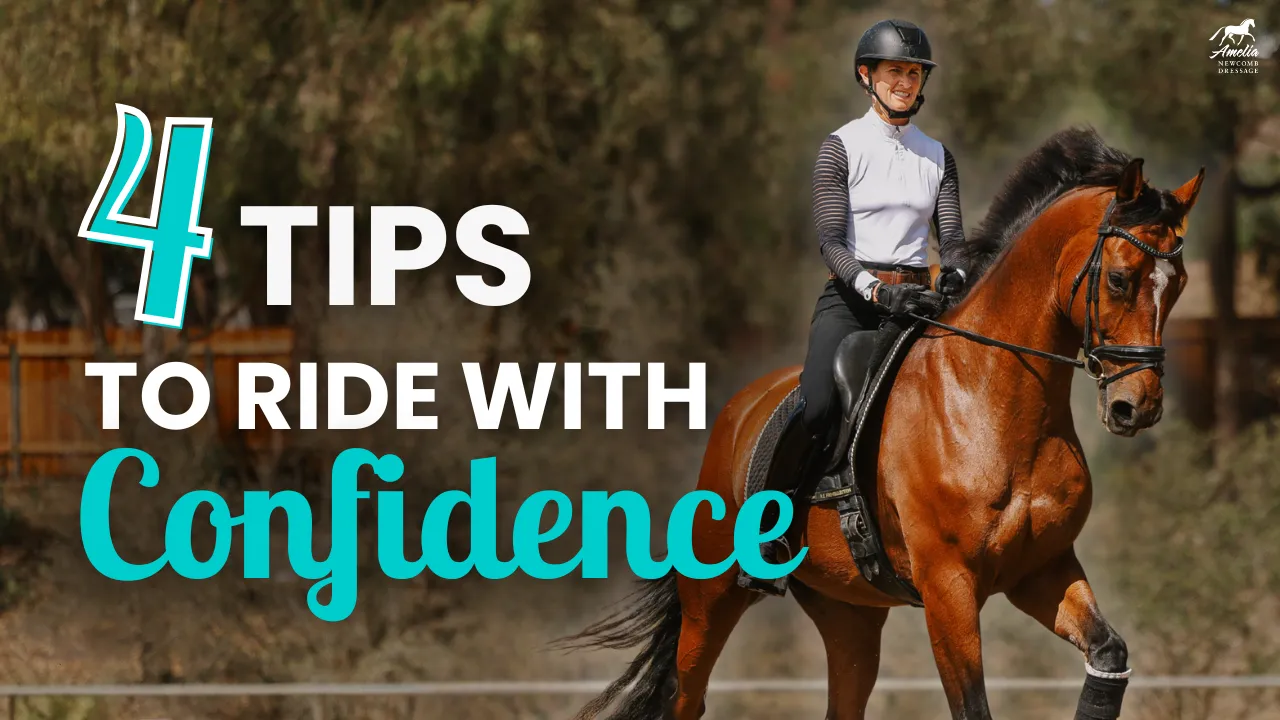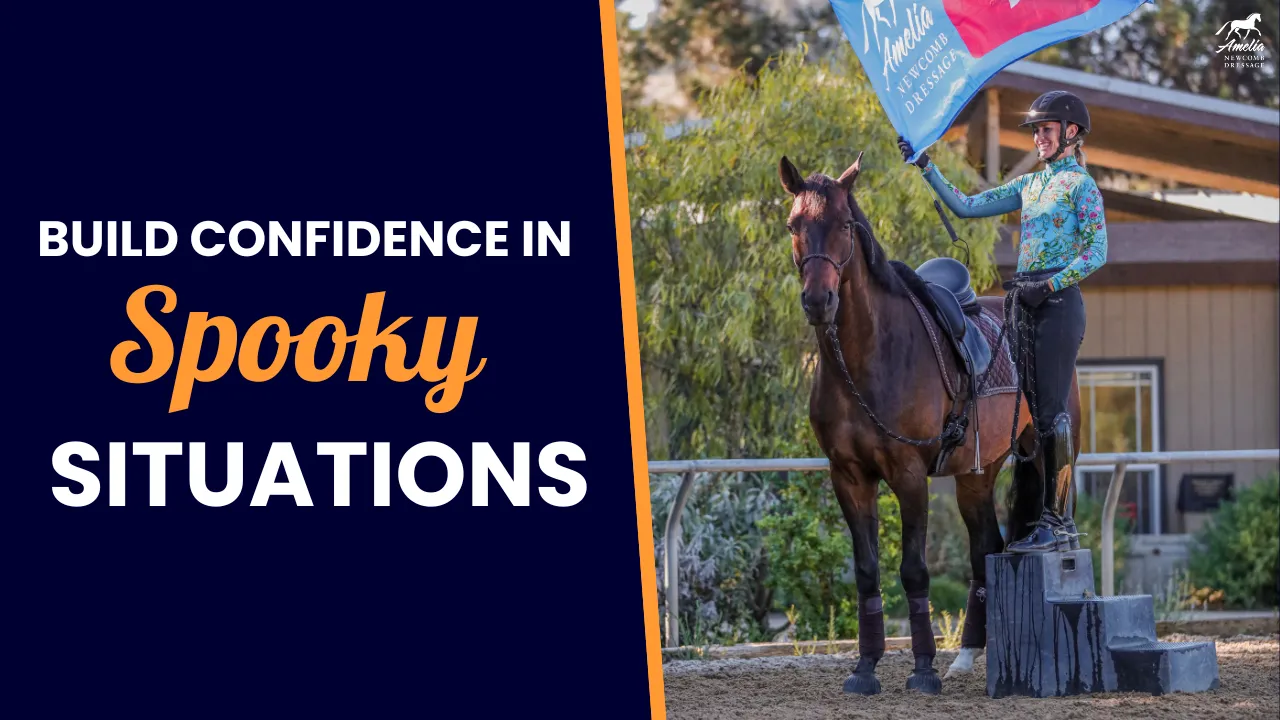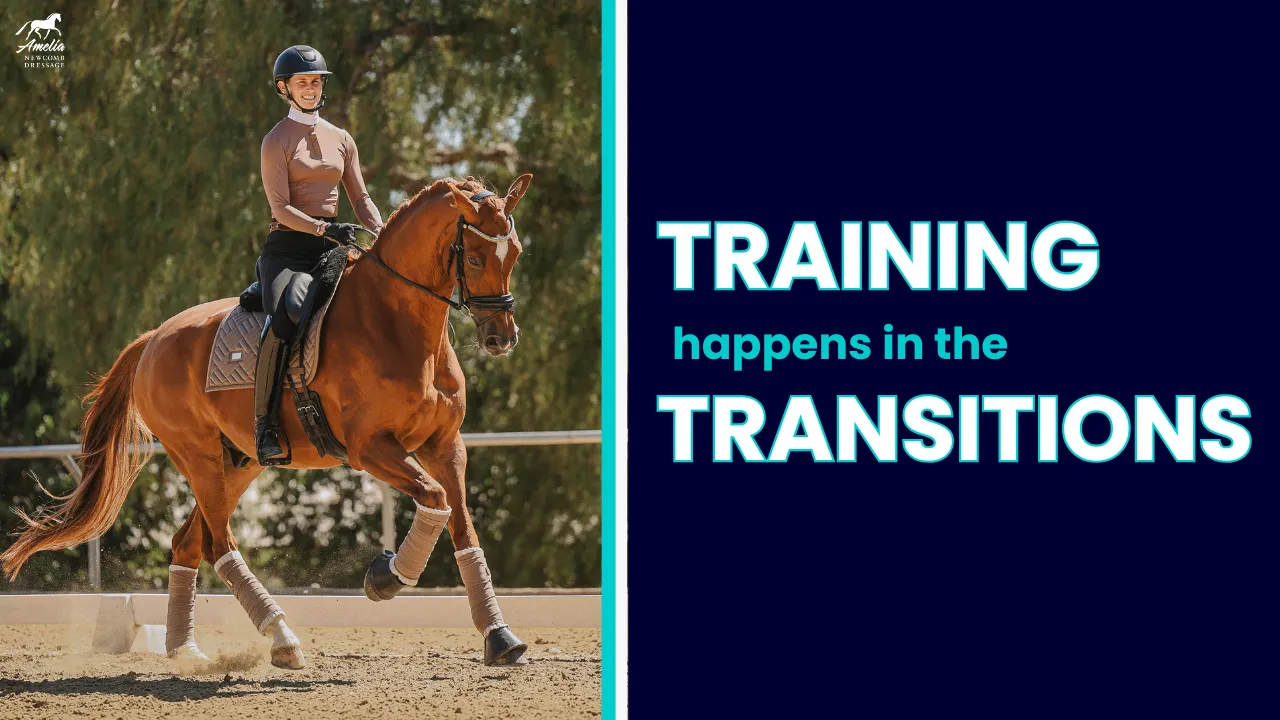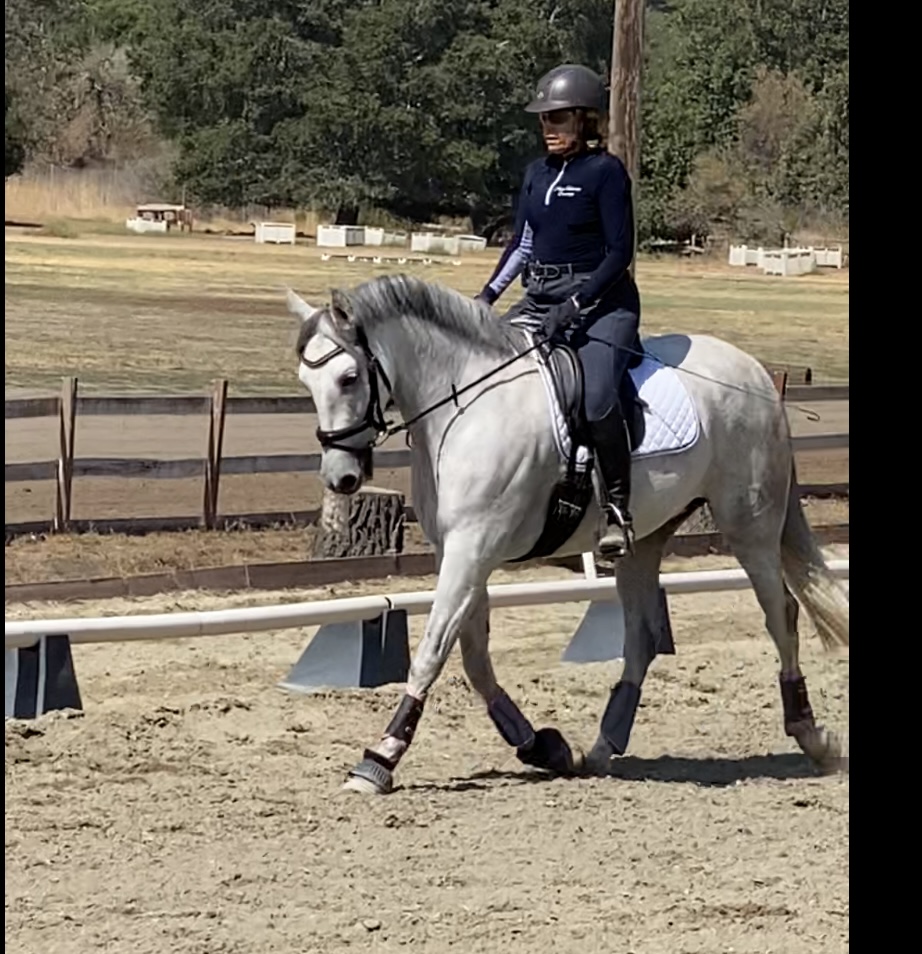
Train Your Eye is back! This week we are reviewing a photo submitted from Patreon Phyllis (Thanks Phyllis!).
If you haven’t heard about my “Train your Eye with Amelia Newcomb” segments, these are quick 2-4 minute reads with a submitted photo from a real rider in my community. These articles are designed to help train your eye for dressage, rider position, and more while also giving you associated feedback to help the rider (and you if you have the same habits!).
Review the photo, take some notes as to what you see, then read below to see if you were on track with what I see and learn how I would help this rider improve her riding!
What I See:
A lovely looking horse and rider. They are both soft and you can see the horse is lifting his back and reaching over his topline comfortably. This is a lovely looking way of going for a training or first level horse. This grey reminds me a bit of Mercurio from my barn, don’t you think? Let me share what I see and how we could help this rider get to the next stage in her riding.
All three of these points operate very closely together and the thought process will be the same to help the rider improve them.
-Width of hands. The closer our hands are together, the more we ride off our seat and legs. When our hands are wider, they act a little like training wheels, it is easier to keep a consistent contact, easier for the horse to stay in balance, and is easier for them to turn and stop. The problem is, the wider our hands, the more we naturally tip forward and the less we can use our seat. On a young or green horse, this isn’t necessarily a bad thing as it allows us to stay light on their back and interfere as little as possible with their balance as they learn how to carry a rider. But as we move up the levels, wide hands make it impossible to sit into our seat bones and get a secure and independent seat. In addition, the horse will never be able to find their own (and better) balance and thus their progression up the levels will be stifled.
-Eye-line While Phyllis does a nice job of looking where she is going, her eyeline is a little low for my liking and her shoulders are a bit tense/hunched. When we have even a few degrees of difference in our eye-line, it can make a massive ripple effect to the rest of our body and the ability for our horse to balance.
-Overall balance As I mentioned before, this horse is in a lovely frame for training or first level. It’s a little hard to tell from a snapshot photo of this horse, and it could just simply be the moment that the shot was taken, but as we develop and train a horse up the levels and especially as you move into Second Level and introduce collection, you want to start to see the legs lift up higher and that the horse starts to bend more in the knees hocks, shoulders, and stifles. Ideally I would like to see the feet more off of the ground! We have to shift the balance a little more to the hindquarters to lift the shoulders and poll of the horse. When the horse isn’t in the correct balance for the level they are riding, they will always find it difficult (if not impossible) to complete the movements. How do you know you’re in the correct balance and frame for the level of riding you are at? A quick and simple check: Can you change what you are doing at any moment? Or does the horse require several strides to respond? For example, in the leg-yield, can you ride straight at any moment? If the answer is yes, then the horse is in balance.
As I mentioned all three of these points are very tightly woven in together.
The first thing I would ask Phyllis to do would be to lift her chin and slide it back towards the base of her neck and overtop of her shoulders. This will naturally make her lengthen her neck and chest which will cause her shoulders to drop and move slightly back. This new chest position then affects her back and tips her back into her upright seat bones (where she should be. Recall we want our seat bones to be directly up and down in the saddle, not forward or back).
This dropping of the shoulders will allow her to bring her elbows closer to her body, and hands closer to her horse’s neck (bonus, it will also help correct the slight piano hands). Here’s the thing, simply telling the rider to bring her hands closer together will not solve the problem of wide hands, you have to first instruct her eyes, shoulders, and upper body. Recall when I said “the closer our hands are together, the more we ride off our seat”. If you are riding off your wide hands, then bring them together but have nothing to replace your steering and speed (ie your seat aids!), then you will naturally bring your hands and reins wide again when you need to turn or slow down. Hence you need to get your seat into the correct position, then you can bring your hands together.
I am confident that Phyllis will feel an improvement on the balance just from simply adjusting her position as suggested. But in addition to that, lots of transitions and working on suppleness will help the overall balance. Exercises like forward and back transitions within a gait, transitions in and out of shoulder-fore, and spiral circles in and out, will all help ask him to shift his weight to his hindquarters and lift his back/shoulders.
How to improve/exercise to try:
For Eye-line, Check out these videos:
Are you looking up the right way?
If I’m finding I’m struggling with looking down instead of up, I have two quick fixes. 1) Every time I pass a letter in the arena (or corner, or other marker), I check in with my chin position and posture. 2) I braid a little ribbon or put a colourful elastic band in my horse’s mane (about halfway up or right behind the poll if they will tolerate it there). and then I know, every time I see the bit of colour, I need to adjust my chin/eye position.
For helping transfer from wide hands to riding with legs, check out this video.
To help with the overall balance, try these exercises:
PS-Want to have your photo submitted for Train Your Eye? My Patreon Members get first priority for photo submission.
